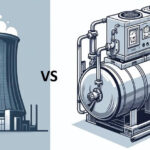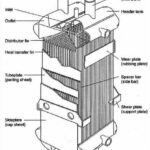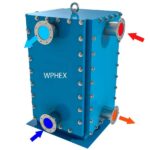Pump types are different. This article breifly discuss the five main common pump types.
Pumps are an essential component in many industrial processes, playing a critical role in moving liquids and gases from one location to another. They are used in a wide range of applications, including water treatment, chemical processing, oil and gas production, power generation, and more.
There are many different pump types of pumps used in industry, each with its own unique design and operating principles.
Pump Types
Some of the most commonly used pump types in industrial applications include:
- Centrifugal pumps: Centrifugal pumps are one of the most commonly used types of pumps in industry. They work by using a rotating impeller to generate centrifugal force that pushes fluid through the pump and into the discharge pipe. Centrifugal pumps are simple in design, efficient, and can handle a wide range of fluids, making them well-suited for many industrial applications.
- Positive displacement pumps: Positive displacement pumps work by trapping a fixed amount of fluid in a chamber and then compressing it to force it out of the pump. This type of pump is ideal for applications where a constant flow rate is required, as it can maintain a constant discharge rate regardless of changes in the system’s pressure or flow conditions. Examples of positive displacement pumps include diaphragm pumps, screw pumps, and gear pumps.
- Dynamic pumps: Dynamic pumps, also known as kinetic pumps, rely on the movement of the fluid itself to generate flow. Examples of dynamic pumps include axial flow pumps and radial flow pumps. These pumps are often used in applications where high flow rates are required, such as in water treatment or flood control systems.
- Vacuum pumps: Vacuum pumps are used to create a partial vacuum by removing air or gas from a sealed chamber. They are commonly used in applications such as degassing, vacuum packaging, and vacuum drying. There are several types of vacuum pumps, including positive displacement pumps, rotary vane pumps, and diaphragm pumps.
- Submersible pumps: Submersible pumps are designed to be submerged in a fluid and are commonly used in applications such as sewage treatment, water wells, and drainage systems. They are able to handle difficult liquids and can operate in harsh environments, making them well-suited for industrial applications.
Each type of pump has its own set of advantages and disadvantages, and the choice of pump for a specific application will depend on a variety of factors, including the type of fluid being pumped, the flow rate and pressure requirements, and the operating conditions.
In conclusion, pumps are a critical component in many industrial processes, playing a vital role in moving liquids and gases from one location to another. With a wide range of pumps available, it is important to carefully consider the specific requirements of each application to ensure that the right pump is selected for the job.
Useful software
Process engineering calculator – a set of various process tools in one software












